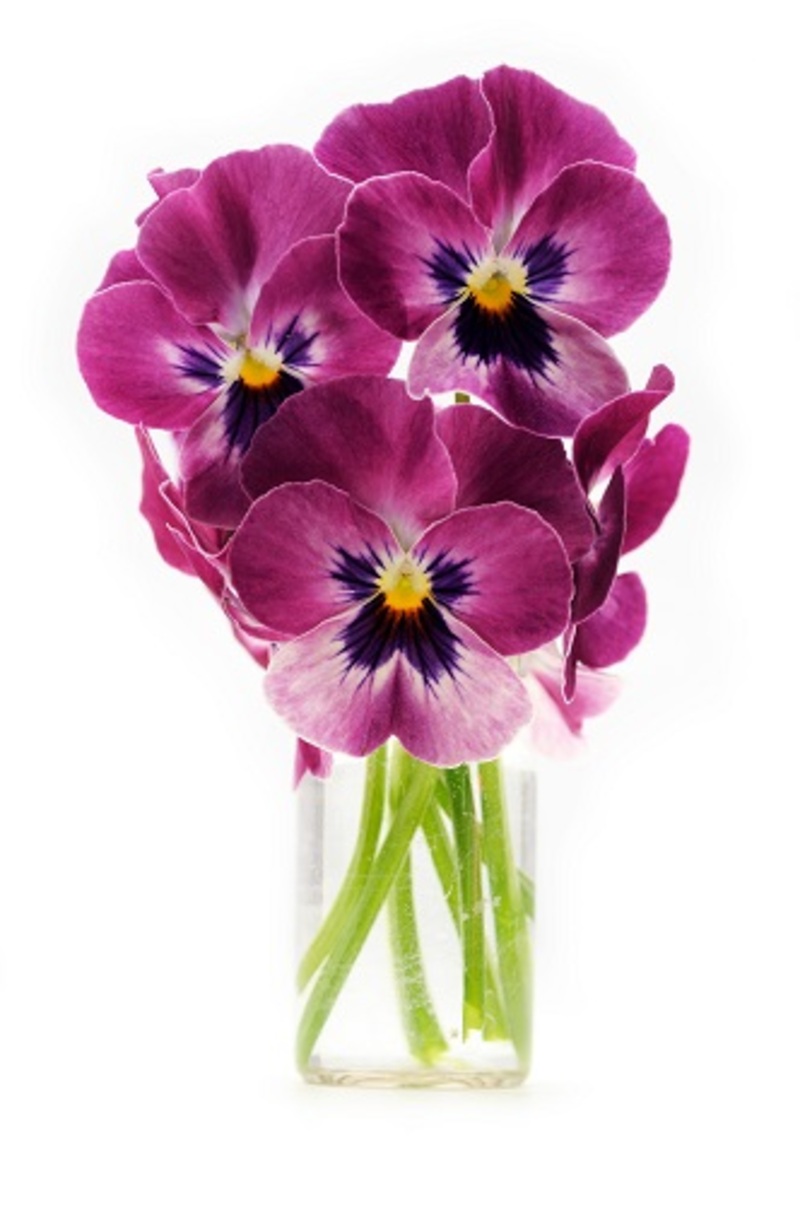Discover the Surprisingly Unknown World of Tulips
Posted on 03/07/2025
Discover the Surprisingly Unknown World of Tulips
Tulips are often regarded as symbols of spring, embodying beauty, renewal, and vibrant color. Yet, beyond their common presence in gardens and bouquets, there exists a surprisingly unknown world of tulips brimming with stories, cultural significance, and botanical mysteries.
Join us as we unveil the secrets, history, and the multifaceted charm of tulips that most people have never heard about. From their ancient origins to their economic impact and horticultural wonders, this article offers a comprehensive, insightful look into the enigmatic world of these stunning flowers.
The Enigmatic History of Tulips
The history of tulips is as colorful and winding as the petals themselves. A deeper look reveals an origin far removed from the Netherlands, which is universally associated with these blooms today.
Origins: Where Do Tulips Come From?
*Origins of tulips* date back centuries, finding their native habitat across Central Asia, particularly in regions that are now part of Kazakhstan, Uzbekistan, and Afghanistan. Wild tulip species blanketed the mountains, thriving in the arid climates and rocky soils.
- The word "tulip" is derived from the Persian word dulband, which means turban, alluding to the flower's unique shape.
- Tulips were cultivated by the Ottoman Empire as early as the 10th century, cherished for their medicinal properties and ornamental value.
- Decorative motifs of tulips adorned palace gardens, textiles, and ceramics throughout the Ottoman era, making the flower an emblem of luxury and nobility.
The Dutch Golden Age and Tulip Mania
During the 17th century, tulips made their way to Western Europe, captivating the Dutch with their vivid hues and rare color patterns. This passion fueled what is now known as Tulip Mania -- one of history's most famous speculative bubbles.
- Tulip bulbs became so valuable that they were traded on Amsterdam's stock exchange, often used as a currency for land, houses, and businesses.
- Rare tulip varieties, especially those affected by a mosaic virus that caused "breaking" or streaked petals, commanded astronomical prices.
- The bubble burst dramatically in 1637, leaving fortunes lost but tulips firmly entrenched in Dutch culture and economics.
Today, the legacy of Tulip Mania continues, making tulips more than mere garden beauties -- they symbolize the power and peril of human desire and economic speculation.

Botanical Wonders: Tulip Varieties and Species
Despite their universal recognition, the
Wild Tulip Species: Nature's Palette
There are over 75 wild species of tulips, each showcasing unique forms, sizes, and colors. These species, found across steppes, mountains, and deserts, are the genetic ancestors of today's ornamental varieties.
- Tulipa sylvestris: Also known as the Woodland Tulip, native to Europe and known for its delicate, fragrant yellow flowers.
- Tulipa humilis: A small, early-blooming species with deep pink petals and striking blue centers.
- Tulipa tarda: Boasting star-shaped yellow and white flowers, it's a favorite among gardeners seeking hardy, naturalized tulips.
Wild tulips were historically used in traditional medicines in Central Asia and Iran, believed to treat ailments ranging from pain to digestive disorders.
The World of Hybrid Tulips
Hybrid tulips were first developed by passionate horticulturists in the 16th century, and their creations have only grown more spectacular since. Major classes include:
- Single Early Tulips: Compact, sturdy, and among the first to bloom in spring.
- Darwin Hybrids: Renowned for their tall stems and vibrant, long-lasting colors.
- Parrot Tulips: Sporting ruffled petals with exotic, featherlike forms and multicolored patterns.
- Lily-Flowered Tulips: Slender, elegant blooms with pointed petals that flare outward.
Beyond form and color, modern hybrid tulips also offer enhanced disease resistance, fragrance, and longer blooming times, making them a staple in gardens worldwide.
Tulips Across the Globe: Cultural Impact
Tulips have woven themselves into the cultural tapestries of many nations. Understanding their symbolism and significance enriches one's appreciation for these beloved flowers.
The Tulip as a Symbol of Love and Life
In Persian poetry and folklore, the tulip is a potent emblem of passionate love and sacrifice. Its association with the heart and burning devotion has inspired countless artistic and literary works.
Meanwhile, in Turkey, the tulip remains a national symbol of paradise and universal beauty. During the Ottoman "Tulip Era" (Lale Devri), the flower stood for peace, prosperity, and cultural enlightenment.
Tulip Festivities Around the World
- Netherlands: The famous Keukenhof Gardens and annual Tulip Festival attract millions of visitors, showcasing over seven million bulbs in bloom each spring.
- Canada: Ottawa's Tulip Festival began as a thank-you for sheltering the Dutch royal family during WWII, a tradition celebrated with vibrant flower displays.
- United States: Skagit Valley in Washington is renowned for its sprawling tulip fields, drawing tourists from across the country each year.
These festivals highlight the global fascination with tulips, transforming entire landscapes into breathtaking floral spectacles and uniting diverse cultures in celebration.
Little-Known Facts and Surprising Secrets of Tulips
Think you know everything about tulips? Think again! From scientific oddities to hidden meanings, tulips are full of surprises.
Color-Changing Petals and Genetic Surprises
Tulips can change color! Certain varieties possess pigments that respond to soil acidity, temperature, and even diseases -- leading to fascinating shifts in hue over time.
Furthermore, the famed "broken" tulip patterns that sparked Tulip Mania were actually caused by a plant virus (Tulip breaking virus). While these streaked tulips were wildly prized in the past, today growers seek to keep their stock virus-free for the sake of plant health.
The Edible and Medicinal Side of Tulips
During desperate times, such as World War II, people in the Netherlands turned to tulip bulbs as food. While most bulbs are not toxic, they are only edible when properly prepared. However, caution is advised as many parts of the plant can cause mild gastrointestinal upset if mishandled.
Some tulip extracts have been researched for their potential in perfumery and pharmaceuticals due to their subtle fragrances and antioxidant properties.
Ecological Contributions
- Tulips are early spring pollinator attractors, providing vital food sources for bees and insects after winter.
- They are integral to restoring native steppe and meadow ecosystems through rewilding projects in Central Asia and Europe.
Growing and Caring for Tulips: A Comprehensive Guide
With their dazzling diversity and history, it's no wonder so many people wish to grow tulips at home. But successful tulip cultivation requires a blend of art and science.
Choosing the Right Tulip Bulbs
- Buy bulbs from reputable nurseries in the fall season for optimal freshness.
- Healthy tulip bulbs should feel heavy, firm, and free from mold or visible blemishes.
- Diversify! Planting a mix of early, midseason, and late-blooming varieties ensures weeks of continuous color.
Planting Techniques and Soil Preparation
- Pick a spot with full or partial sun and well-drained soil. Tulips hate wet feet!
- Plant bulbs at a depth of 6-8 inches, pointy side up. Well-spaced bulbs prevent overcrowding and disease.
- Mix in compost or bulb fertilizer to boost root development and flowering vigor.
- Water thoroughly after planting, but avoid overwatering to reduce rot risk.
Seasonal Care and Maintenance
- When blooms fade, allow the leaves to yellow naturally. This process lets the bulb store energy for next year's flowers.
- Remove spent flowers (deadheading) to keep plants tidy and reduce fungal risk.
- Where winters are harsh, mulch tulip beds to protect bulbs from freeze-thaw cycles.
- In warm climates, many tulips thrive as annuals; lift and refrigerate bulbs for 12-16 weeks for reliable blooms.
Pro Tip: Tulips benefit from being repositioned every few years to avoid disease and ensure vigorous displays.
Rare and Record-Breaking Tulips
Some tulips have earned fame not only for their beauty but also for their rarity and astonishing prices.
- The "Semper Augustus" tulip, infamous during Tulip Mania, was so prized it was said to cost more than a canal house in Amsterdam!
- Today, breeders hunt for black tulips, with "Queen of Night" and "Black Hero" coming close but never truly pitch-black.
- Some tulip varieties, like the multi-petaled Angelique or viridiflora types with green streaks, are coveted for their elegance and distinctiveness.

Conservation and the Future of Wild Tulips
Many wild tulip species face threats from habitat loss, climate change, and poaching for the horticultural trade. Conservation initiatives strive to preserve their genetic diversity and natural habitats.
- Botanic gardens and seed banks are crucial for safeguarding rare and endangered tulip species.
- Regional education programs encourage responsible cultivation and appreciation for native flora.
- Ecologists work on rewilding efforts, returning tulips to landscapes where they were once plentiful.
Protecting the unknown world of tulips is vital, not only for garden lovers but also for the preservation of our planet's unique biodiversity.
Conclusion: Embracing the Mystery of Tulips
From ancient empires to modern festivals, from wild steppe meadows to urban gardens, the surprisingly unknown world of tulips is a story of color, culture, and continual discovery. Whether you're a gardener, history buff, or simply a lover of beauty, tulips offer a lifetime of wonder -- and countless secrets yet to be uncovered.
Next time you see a tulip, remember: You're gazing upon a flower that has traveled across continents, sparked financial chaos, inspired poetry, and still keeps mysteries at its roots. Explore, protect, and appreciate the incredible world of tulips -- the journey has only just begun.
- Interested in growing tulips? Start by exploring heirloom and species tulips for a truly unique display.
- Passionate about plant history? Dive deeper into the fascinating stories of botanical exploration and trade.
- Inspired by conservation? Discover local efforts to preserve native bulb habitats and join the movement.
The world of tulips awaits. Have you truly discovered it?
Latest Posts
The Romantic Tradition of Red Roses on Valentine's Day
Mastering the Art of Orchid Care
Exploring the Secrets to Nurturing Hydrangeas





